Fiber optic cable is a very thin glass strand through which a pulse of light is transmitted. Nowadays, fiber optic cable is a desirable cable medium due to its immunity to electromagnetic interference (EMI) and radio frequency interference (RFI). It can transport optical signals for significant distances, whether in local area, wide area, or in metropolitan area. This article will tell some information about fiber optic cable and aim at providing a guideline on choosing the right fiber optic cable.
Fiber optic cable can be divided into single-mode fiber cable and multimode fiber cable. Single-mode optical fiber generally has a core diameter of 9 µm and requires laser technology for sending and receiving data. It can carry a signal for miles, which makes it ideal for telephone and cable television providers. As the name suggests, multimode fiber permits the signal to travel in multiple modes, or pathways, along the inside of the glass strand or core. It is available with fiber core diameters of 62.5 µm or 50 µm. Although the core sizes of single-mode fiber and multimode fiber differ, both fiber types end up with an outer diameter of about 250 µm. The key differences between the two kinds of fiber optic cables have been illustrated more clearly in another article—Single-mode Fiber vs. Multimode Fiber: Which to Choose?
The major difference between indoor and outdoor fiber optic cable is water blocking. Any conduit is someday likely to get moisture in it. Outdoor cables are designed to protect the fibers from years of exposure to moisture. Indoor cables are what we call “tight-buffered” cables, where the glass fiber has a primary coating and secondary buffer coatings that enlarge each fiber to 900 microns—about 1mm or 1/25-inch, to make fiber easier to work with.
Usually, indoor cables include simplex and zipcord, distribution cables and breakout cables. Simplex fiber optic cables are one fiber, tight-buffered (coated with a 900 micron buffer over the primary buffer coating) with Kevlar (aramid fiber) strength members and jacketed for indoor use. The jacket is typically 3mm (1/8 in.) diameter. Zipcord is simply two of these jointed with a thin web. It’s used mostly for patch cord and backplane applications, but zipcord can also be used for desktop connections.
Distribution fiber optic cables contain several tight-buffered fibers bundled under the same jacket with Kevlar strength members and sometimes fiberglass rob reinforcement to stiffen the cable and prevent kinking. These cables are small in size, and used for short, dry conduit runs, riser and plenum applications. The fibers are double buffered and can be directly terminated, but because their fibers are not individually reinforced, these cables need to be broken out with a “breakout box” or terminated inside a patch panel or junction box. The distribution cable is the most popular cable for indoor use.
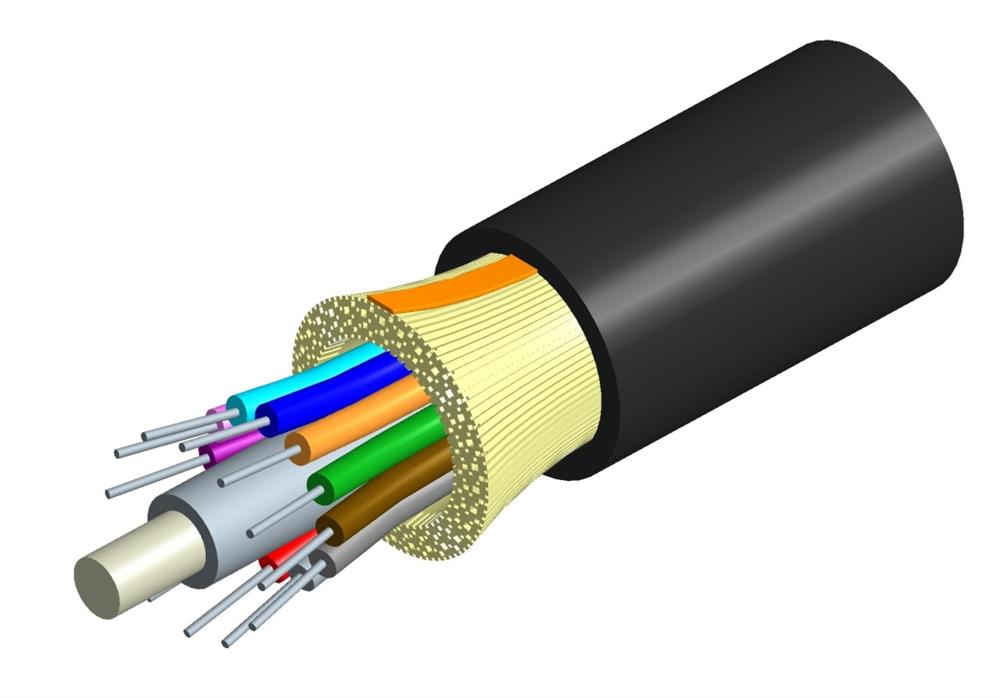
Breakout fiber optic cables are made of several simplex cables bundled together inside a common jacket for convenience in pulling and ruggedness. This is a strong, rugged design, but is larger and more expensive than the distribution cables. They are suitable for conduit runs, riser and plenum applications, and ideal for industrial applications where ruggedness is important or in a location where only one or two pieces of equipment need to be connected.
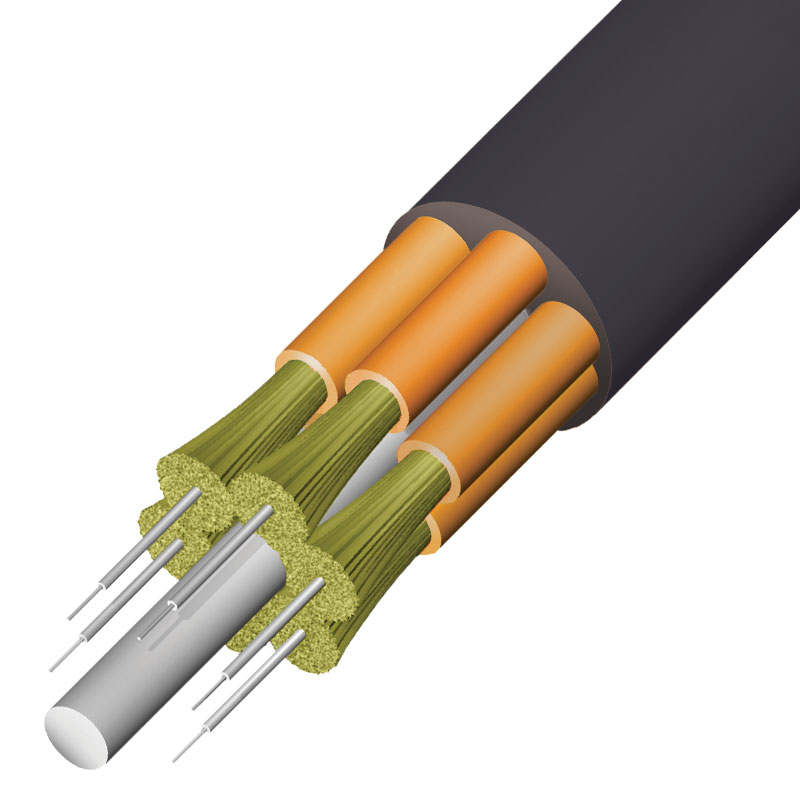
Fiber optic cable in outdoor applications require more protection from water ingress, vermin and other conditions encountered underground. Outdoor cables need increased strength for greater pulling distances. Generally, fiber optic cables installed in outdoor applications contain loose tube fiber optic cable, ribbon fiber optic cable, armored fiber optic cable and aerial fiber optic cable.
Loose tube fiber optic cables are composed of several fibers together inside a small plastic tube, which are in turn wound around a central strength member and jacketed, providing a small, high fiber count cable. They are suitable for outside plant trunking applications because they can be made with loose tubes filled with gel or water absorbent powder to prevent harm to the fibers from water. Since the fibers have only a thin buffer coating, they must be carefully handled and protected to prevent damage. They can be used in conduits, strung overhead or buried directly into the ground.
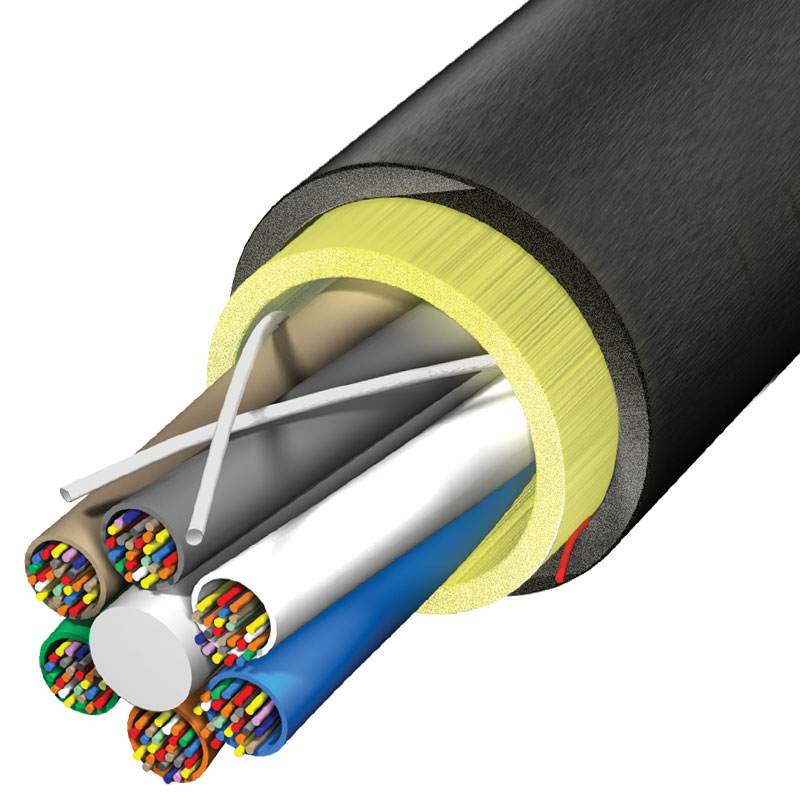
Ribbon fiber optic cables offer the highest packing density as all the fibers are laid out in rows, typically of 12 fibers, and laid on top of each other. In this way, 144 fibers only have a cross section of about 1/4 inch or 6mm. Some cable designs use a slotted core with up to 6 of these 144 fiber ribbon assemblies for 864 fibers in one cable. Because they are outside plant cables, they are gel-filled for water blocking.
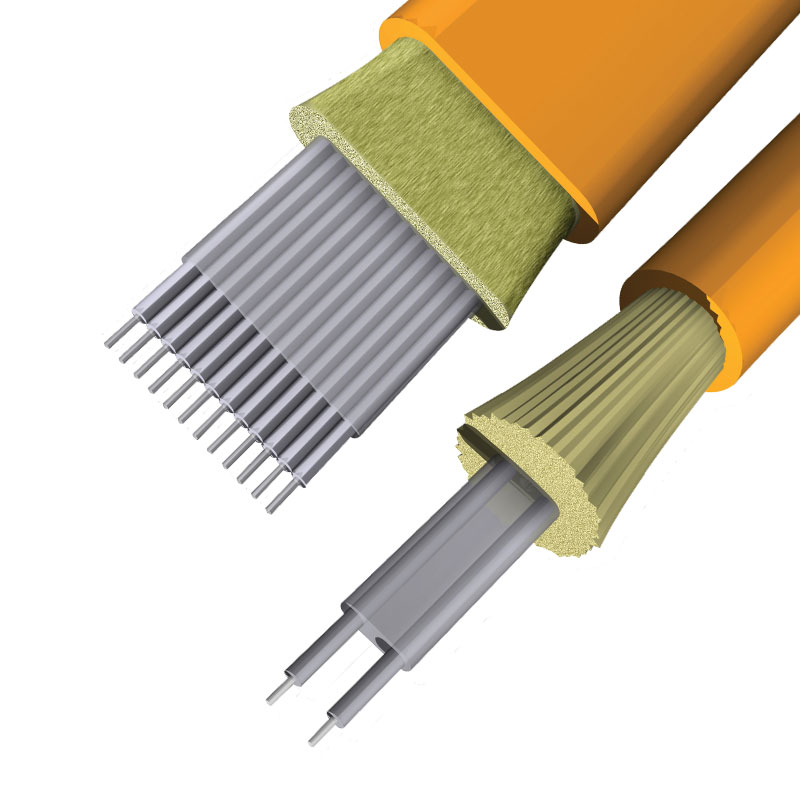
Armored fiber optic cables are installed by direct burial in areas where rodents are a problem. Usually they have metal armored between two jackets to prevent rodent penetration. This means the cable is conductive, so it must be grounded properly. It is best to choose armored fiber optic cable when use cable directly buried outdoor. Aerial fiber optic cables can be lashed to a messenger or another cable (common in CATV) or have metal or aramid strength members to make them self-supporting. Aerial cables are for outside installation on poles.
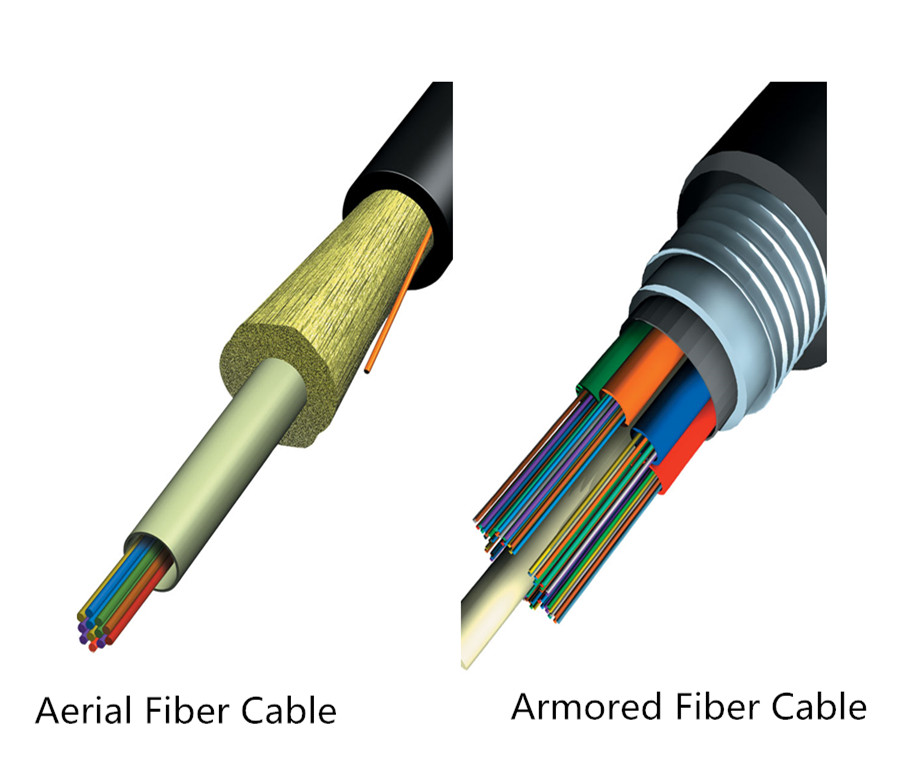
Fiber optic cable jackets can provide strength, integrity and overall protection of the fiber member. PVC is widely used as a cable jacket for many applications—computers, communications, low-voltage wiring, etc. PVC can potentially be dangerous in a fire situation, releasing heavy smoke and hydrogen chloride gas, which can be irritating to humans and corrosive to electronic devices. OFNP, or plenum jackets, are suitable for use in plenum environments such as drop-ceilings or raised floors. Many data centers and server rooms have requirements for plenum-rated cables. LSZH is a jacket made from special compounds which give off very little smoke and no toxic halogenic compounds when burned.
What type of fiber optic cable should i use? When choosing the fiber optic cable, please always remember the elements mentioned in this article. Only make clear all these aspects can you select the fiber optic cable that most suits your applications. If you are still confused about which one to choose, you can visit www.fs.com or contact sales@fs.com to seek help as lots of professional advice can be given by FS team.
Related Article: What Kind of Fiber Patch Cord Should I Choose?
Related Article: A Guide on Fiber Optic Cable